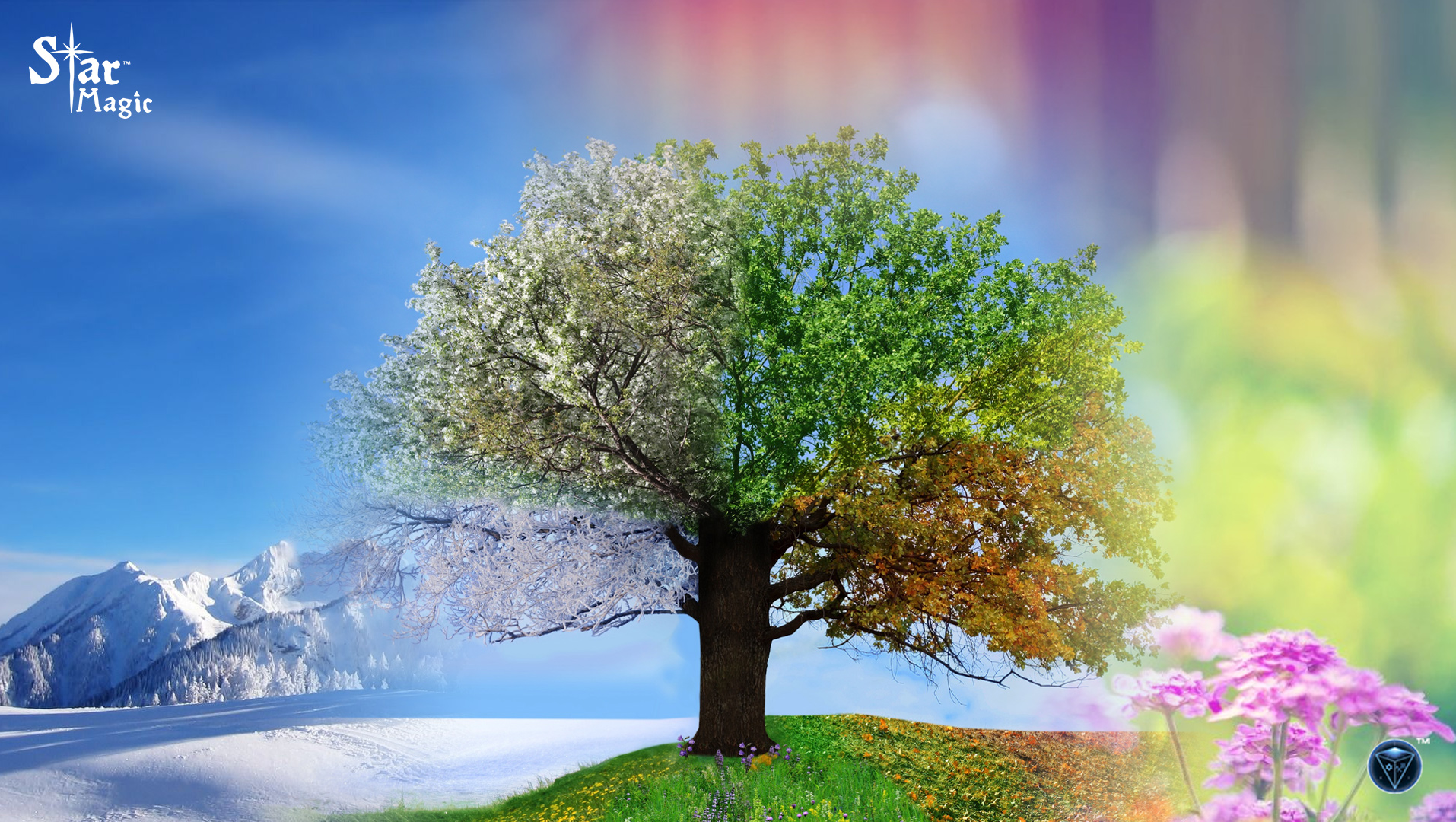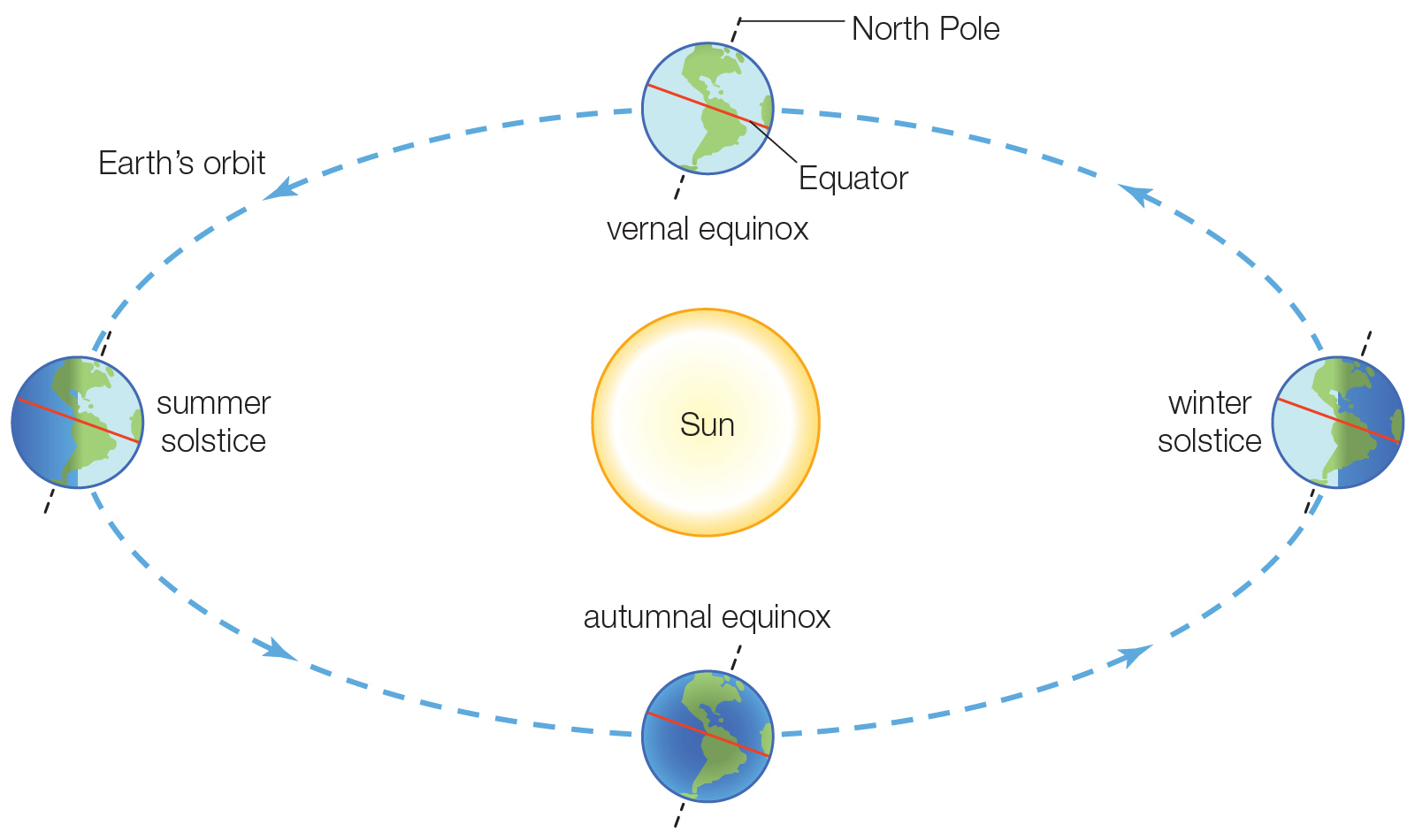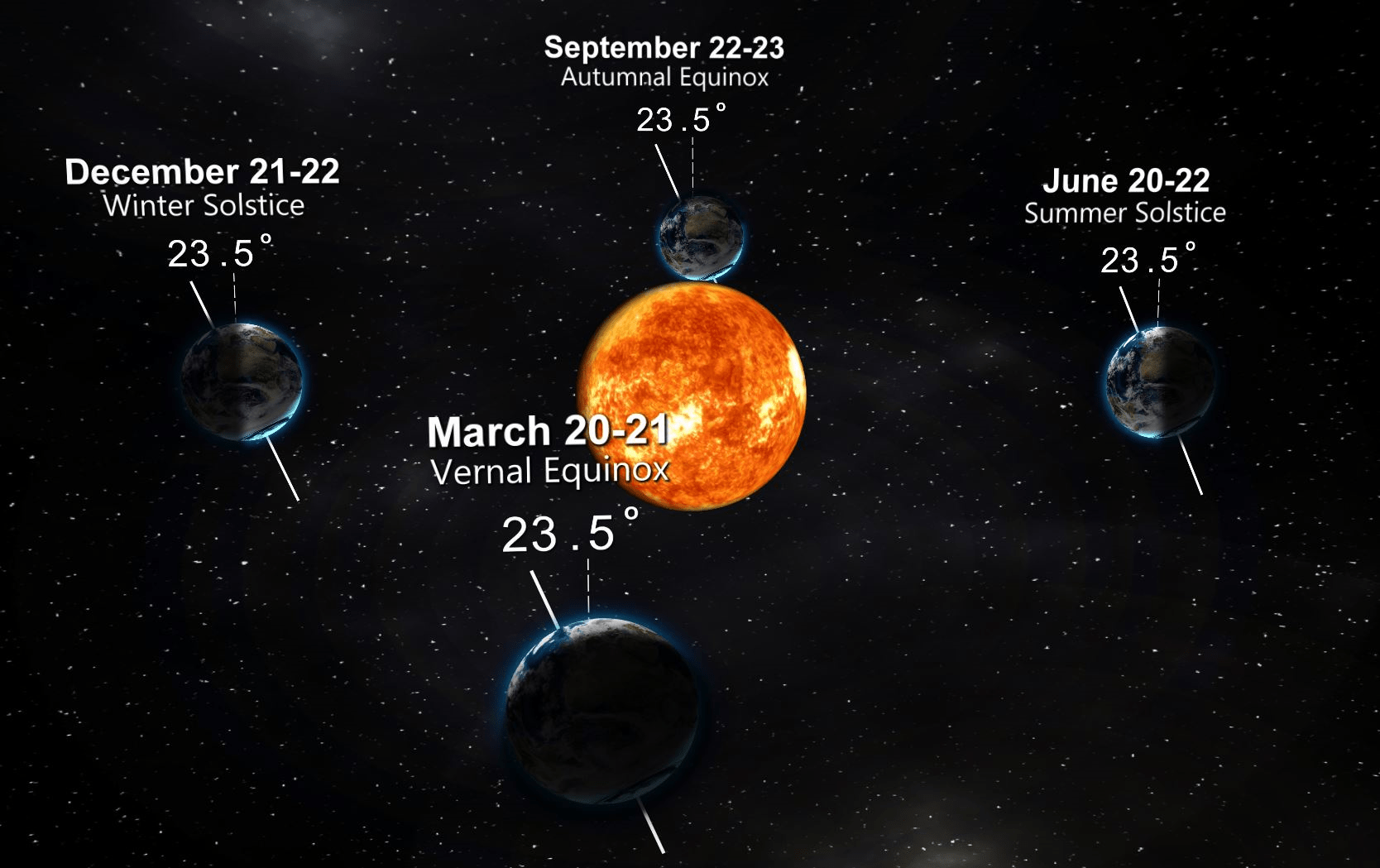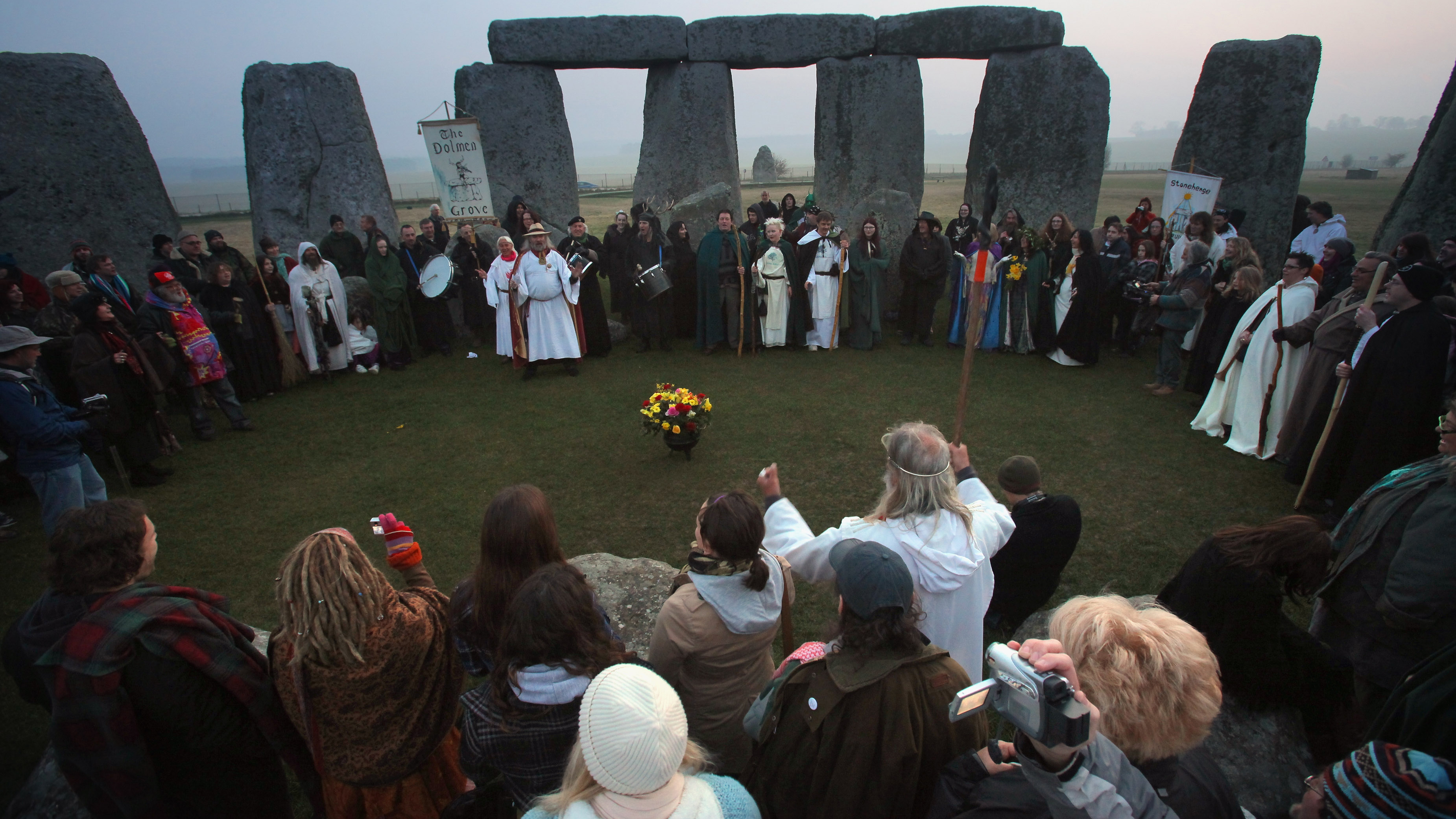The Spring Equinox

The spring equinox is also known as the vernal equinox. The spring equinox welcomes the spring season and it bids farewell to the winter.
The spring equinox falls around the 21st of March every year. In 2020 the Spring Equinox will be on March 19th.
The word equinox originates comes from the Latin words aequus (equal) and nox (night). The celebration of the spring equinox is deeply rooted in pagan traditions and rituals.
On the day of the spring equinox, the length of day and night is nearly equal across the world. This is when the two hemispheres of the Earth are receiving the Sun’s rays about equally.
Science of the Equinoxes
The first day of spring is marked by the spring equinox. The equinox happens at the same moment worldwide. This date only signals spring’s beginning in the Northern Hemisphere. It announces the arrival of autumn in the Southern Hemisphere.
Each year there are two equinoxes. One is the spring (vernal) equinox and the other in the autumn (autumnal) equinox. The spring equinox happens when the Sun moves towards the north and the autumn equinox takes place when it moves towards the south.
Only at the two equinoxes does the Sun only rise due east and set due west for all of us on Earth. The equinox is a time when the Sun is exactly above the equator and when the length of the day and night are equal.
The Sun crosses the celestial equator from the south to the north during the vernal equinox. This is called the celestial equator because it is an imaginary line in the sky above the Earth’s equator. The Sun would pass directly overhead on its way north if you observe it from a location on the equator.

The equinoxes are also the only time when the Sun’s annual path intersects with the celestial equator. When the Sun passes overhead, the tilt of the Earth is zero relative to the Sun. This means that Earth’s axis neither points toward nor away from the Sun. The Earth never orbits upright as it is tilted on its axis by about 23.5 degrees.
After the spring equinox, the Northern Hemisphere tilts toward the Sun. This is why we start to get longer, sunnier days. We enjoy the increasing sunlight hours, with earlier dawns and later sunsets.
Spiritual Myths & Meanings
The start of spring and the spring equinox is associated with the concept of death and rebirth. This is evident in the Christian celebrations of Easter around this time of year which recognises the resurrection of Jesus Christ.
Easter is believed to have originated in pagan celebrations of the goddess Ostara or Eostre. Ostara is a goddess of fertility. Her holiday is an intense time of purification, balance, renewal and new possibilities. Pan, the Horned God appears as Ostara’s consort to represent hunting, dancing, and wildness.

The spring equinox is the time of the exact balance between the light and the dark. Lying between the pagan celebrations of Imbolc and Beltane, this is a time for celebrating the balance between extremes that are found amid the seasons.
The spring equinox symbolises the time when the innocence and childlike wonder of life become a reality. This is when the Earth becomes warmer and more nurturing towards new life.
The spring equinox is also supposedly the one day of the year when you can perfectly balance an egg on its end. The myth is, of course, untrue and with a bit of patience, you can balance an egg on its end at any point during the year.

Astrologers look out for the spring equinox to better understand how it will affect the cosmic balance of energies. The sign of Aries the Ram is based on the start of the spring season and its reproductive cycle is linked to the spring equinox.
Celebrating the Equinox
In the Northern Hemisphere the vernal equinox signals new beginnings and the renewal of nature. Most cultures and religions have ancient traditions for celebrating the start of spring.
Rebirth is a major theme of spring. There are plenty of legends and beliefs about the rising of the sun or the rising of a king at this time. During this time flowers start to bloom and baby animals are born. It is traditional to plant seeds at this time. Their growth symbolises rebirth, the triumph over death, like a phoenix rising from the ashes of winter.
The spring equinox is one of the only four times of the year, at the two equinoxes and solstices, when there is open access to the stones of Stonehenge. Festivities start from first light when the sun rises over the stones and the morning is full of music, dancing, and ritual.

Spring is also the perfect time to shake the dust away from the dark days and brighten your home up. The renewal of nature prompts everyone to do their spring cleaning and renew their lives.
Observe Nature
Observe nature during spring and you will notice your days are getting longer and warmer. It is great to spend more time out in nature. Observe the buds and shoots of plants and trees and breathe in that fresh spring air. The prana or life force energy in each breath of the spring air will revitalise you.
Watch the arc of the sun across the sky as it shifts toward the North. Observe the birds are migrating northward along with the path of the Sun. Notice also that the birds are singing more. The increase in sunlight encourages birds to sing.

Look for worms emerging from the earth and also the daffodils poking up their heads. Trees, shrubs, and flowers are sensitive to temperature and day-length also. Since ancient days, people have used them as indicators of when the weather is right for planting.
Enjoy your spring adventure. It is a great time to explore nature and renew your connection with Mother Earth. Go out to the park or the woods, hug some trees, and meditate on the lovely energy of spring.
Healing For Horses Enquiry Form
"*" indicates required fields
Sign up for our weekly newsletter, for inspiration and fresh content from Jerry Sargeant.
Event Enquiry Form
"*" indicates required fields
Sign up for our weekly newsletter, for inspiration and fresh content from Jerry Sargeant.
[mc4wp_form id=”168″]
Download Prospectus Form
[contact-form-7 id=”50219″ title=”Download Propesctus Form”]
Download Prospectus Form
[contact-form-7 id=”50219″ title=”Download Propesctus Form”]
Star Magic
Accessibility Statement
- sminfozzle.testingweblink.com
- December 15, 2025
Compliance status
We firmly believe that the internet should be available and accessible to anyone, and are committed to providing a website that is accessible to the widest possible audience, regardless of circumstance and ability.
To fulfill this, we aim to adhere as strictly as possible to the World Wide Web Consortium’s (W3C) Web Content Accessibility Guidelines 2.1 (WCAG 2.1) at the AA level. These guidelines explain how to make web content accessible to people with a wide array of disabilities. Complying with those guidelines helps us ensure that the website is accessible to all people: blind people, people with motor impairments, visual impairment, cognitive disabilities, and more.
This website utilizes various technologies that are meant to make it as accessible as possible at all times. We utilize an accessibility interface that allows persons with specific disabilities to adjust the website’s UI (user interface) and design it to their personal needs.
Additionally, the website utilizes an AI-based application that runs in the background and optimizes its accessibility level constantly. This application remediates the website’s HTML, adapts Its functionality and behavior for screen-readers used by the blind users, and for keyboard functions used by individuals with motor impairments.
If you’ve found a malfunction or have ideas for improvement, we’ll be happy to hear from you. You can reach out to the website’s operators by using the following email
Screen-reader and keyboard navigation
Our website implements the ARIA attributes (Accessible Rich Internet Applications) technique, alongside various different behavioral changes, to ensure blind users visiting with screen-readers are able to read, comprehend, and enjoy the website’s functions. As soon as a user with a screen-reader enters your site, they immediately receive a prompt to enter the Screen-Reader Profile so they can browse and operate your site effectively. Here’s how our website covers some of the most important screen-reader requirements, alongside console screenshots of code examples:
-
Screen-reader optimization: we run a background process that learns the website’s components from top to bottom, to ensure ongoing compliance even when updating the website. In this process, we provide screen-readers with meaningful data using the ARIA set of attributes. For example, we provide accurate form labels; descriptions for actionable icons (social media icons, search icons, cart icons, etc.); validation guidance for form inputs; element roles such as buttons, menus, modal dialogues (popups), and others. Additionally, the background process scans all the website’s images and provides an accurate and meaningful image-object-recognition-based description as an ALT (alternate text) tag for images that are not described. It will also extract texts that are embedded within the image, using an OCR (optical character recognition) technology. To turn on screen-reader adjustments at any time, users need only to press the Alt+1 keyboard combination. Screen-reader users also get automatic announcements to turn the Screen-reader mode on as soon as they enter the website.
These adjustments are compatible with all popular screen readers, including JAWS and NVDA.
-
Keyboard navigation optimization: The background process also adjusts the website’s HTML, and adds various behaviors using JavaScript code to make the website operable by the keyboard. This includes the ability to navigate the website using the Tab and Shift+Tab keys, operate dropdowns with the arrow keys, close them with Esc, trigger buttons and links using the Enter key, navigate between radio and checkbox elements using the arrow keys, and fill them in with the Spacebar or Enter key.Additionally, keyboard users will find quick-navigation and content-skip menus, available at any time by clicking Alt+1, or as the first elements of the site while navigating with the keyboard. The background process also handles triggered popups by moving the keyboard focus towards them as soon as they appear, and not allow the focus drift outside it.
Users can also use shortcuts such as “M” (menus), “H” (headings), “F” (forms), “B” (buttons), and “G” (graphics) to jump to specific elements.
Disability profiles supported in our website
- Epilepsy Safe Mode: this profile enables people with epilepsy to use the website safely by eliminating the risk of seizures that result from flashing or blinking animations and risky color combinations.
- Visually Impaired Mode: this mode adjusts the website for the convenience of users with visual impairments such as Degrading Eyesight, Tunnel Vision, Cataract, Glaucoma, and others.
- Cognitive Disability Mode: this mode provides different assistive options to help users with cognitive impairments such as Dyslexia, Autism, CVA, and others, to focus on the essential elements of the website more easily.
- ADHD Friendly Mode: this mode helps users with ADHD and Neurodevelopmental disorders to read, browse, and focus on the main website elements more easily while significantly reducing distractions.
- Blindness Mode: this mode configures the website to be compatible with screen-readers such as JAWS, NVDA, VoiceOver, and TalkBack. A screen-reader is software for blind users that is installed on a computer and smartphone, and websites must be compatible with it.
- Keyboard Navigation Profile (Motor-Impaired): this profile enables motor-impaired persons to operate the website using the keyboard Tab, Shift+Tab, and the Enter keys. Users can also use shortcuts such as “M” (menus), “H” (headings), “F” (forms), “B” (buttons), and “G” (graphics) to jump to specific elements.
Additional UI, design, and readability adjustments
- Font adjustments – users, can increase and decrease its size, change its family (type), adjust the spacing, alignment, line height, and more.
- Color adjustments – users can select various color contrast profiles such as light, dark, inverted, and monochrome. Additionally, users can swap color schemes of titles, texts, and backgrounds, with over seven different coloring options.
- Animations – person with epilepsy can stop all running animations with the click of a button. Animations controlled by the interface include videos, GIFs, and CSS flashing transitions.
- Content highlighting – users can choose to emphasize important elements such as links and titles. They can also choose to highlight focused or hovered elements only.
- Audio muting – users with hearing devices may experience headaches or other issues due to automatic audio playing. This option lets users mute the entire website instantly.
- Cognitive disorders – we utilize a search engine that is linked to Wikipedia and Wiktionary, allowing people with cognitive disorders to decipher meanings of phrases, initials, slang, and others.
- Additional functions – we provide users the option to change cursor color and size, use a printing mode, enable a virtual keyboard, and many other functions.
Browser and assistive technology compatibility
We aim to support the widest array of browsers and assistive technologies as possible, so our users can choose the best fitting tools for them, with as few limitations as possible. Therefore, we have worked very hard to be able to support all major systems that comprise over 95% of the user market share including Google Chrome, Mozilla Firefox, Apple Safari, Opera and Microsoft Edge, JAWS and NVDA (screen readers).
Notes, comments, and feedback
Despite our very best efforts to allow anybody to adjust the website to their needs. There may still be pages or sections that are not fully accessible, are in the process of becoming accessible, or are lacking an adequate technological solution to make them accessible. Still, we are continually improving our accessibility, adding, updating and improving its options and features, and developing and adopting new technologies. All this is meant to reach the optimal level of accessibility, following technological advancements. For any assistance, please reach out to


